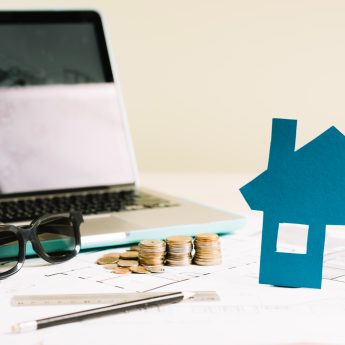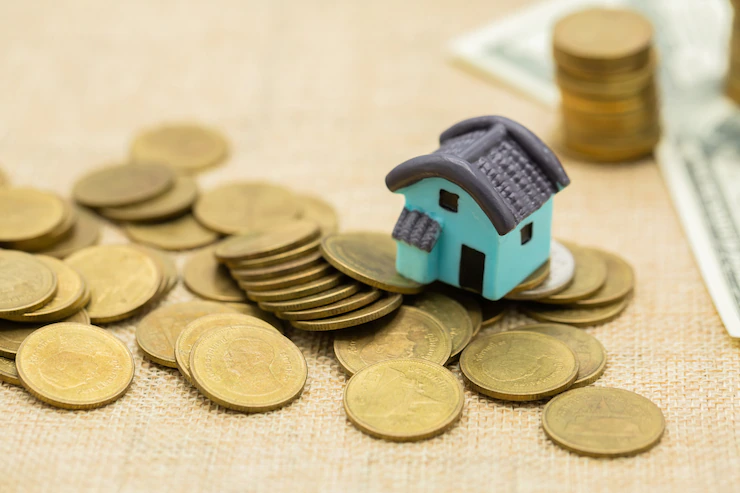5 Tricks For Doing A Fix And Flip As Your First Investment

If you’re thinking of buying a fixer-upper to rehab and resell, your profit margin could be between $40,000 and $70,000 for the average residential home.
But while there are numerous benefits in the pro column, the house-flipping process is also filled with challenges.
But as a first investment, you have to analyze some of the factors first as this is your first suitable investment. So it will be better to measure up all the risk factors before starting the investments.
For instance, you might have concerns about how you can beat seasoned investors and land a profitable acquisition. Is there any way to make sure your fix and the flip project don’t fail? How to get started?
5 Tips For Learning The Right Strategies For Flipping The Houses
When it comes to flipping properties, you’re bound to have many questions and concerns.
We’re here to assist you so you can effectively do a fix and flip as your first investment property.
1. Educate Yourself

Knowledge is the most powerful tool in the fix and flip business. You should familiarize yourself with the ins and outs of your local housing market. Consider the most popular investment areas and get to know the activities of other investors.
But, instead of attempting to handle everything yourself, you’ll need access to real estate investment (REI) tools to assist you in finding the finest deals in the hottest neighborhoods.
With the correct tools, you can pull customized comps to confirm they’re accurate, research what other investors in your area are doing well, and identify hot spots in the market to join in.
REI tools are helpful for each of you who are currently excelling in the business but can be particularly helpful for minimizing the risk factors while you’re still getting the hang of the market.
2. Know Your Budget

Starting with a fix and flip can be quite an expensive investment. So, if you don’t have the necessary funds, you can always seek a fix and flip loans, which will help you cover the costs of purchasing, renovating, and holding the property until it’s sold for profit.
Additionally, in the house-flipping business, discipline is your best friend. To avoid the terrible money pit scenario, you’ll need to be very diligent and stringent with your budget. Always use the 70% rule to ensure that your calculations are correct.
This rule indicates some of the facts like a single investor shouldn’t pay more than 70% as the “after repair value” (ARV) of a property. So, once you’ve calculated how much renovations for an investment property would cost, your maximum purchase price should be no more than 70% of the house’s value after the renovation cost is factored in.
Of course, the rule can be tweaked depending on the state of the market, but it should always serve as a starting point.
3. Round-Up Your Crew

Put together a team of people before buying your fix and flip the property to ensure you’re ready to get started. Time is money in this business, so be prepared to act swiftly when the right deal comes along.
Take the help you need. You’ll likely need a real estate agent, a general contractor, and a title company. In addition, you’ll likely need to hire multiple contractors to help you with the job at different stages.
Remember that you must assemble a reliable team ahead of time, which will save time and money in the long run.
4. Come Up With A Business Plan

If you want to become a full-time property flipper, your first project needs to be profitable enough to get you on the ladder. Always do the research before you buy a first investment property.
Developing a detailed business plan that includes your objectives, budgetary sources, timeframe, and exit strategies will help you get a sense of direction and help you cope with any challenges that occur along the route.
5. Do Your Homework

The worst thing you can do as a first-time investor is take a chance and buy a property without doing your due diligence.
Schedule a professional inspector to evaluate the home you’re contemplating and have them deliver a full report. You’ll also want to double-check that the property’s foundation, mechanics, and other significant elements are in good working order.
Additionally, you’ll want to consult with other members of that experienced team to estimate the renovation budget so that you don’t overpay for your first investment home. Finally, don’t forget to check if the property’s title is free of lines and encumbrances.
6. Conduct Thorough Market Research
What is flipping? It is more like a real estate strategy where you buy a home, renovate it, and further sell it for a profit within a short period of time. Now, flipping a house would require better knowledge, planning, and property savvy to be successful.
Market research in real estate helps investors to understand the market before they jump into the selling process. There is only one objective behind this: to see if the project is viable or if it is going to fit perfectly in the existing market.
7. Get Pre-Approved for Financing
Getting pre-approved for financing can be beneficial in various ways. First of all, it allows you to get quick access to the funds. Secondly, during the investment, you are going to be eligible for better interest rates.
Pre-approval help the investors to properly define their budget as well as avoid all kinds of overspending. If you are a first-time investor, the pre-approval can help you with a faster closing process.
8. Focus on High-ROI Renovations
You might be wondering how the high return on investment or ROI renovations can be beneficial for first-time investors. The upgrades can really boost the overall value of their property. This value can lead to a high resale price.
High ROI renovations also improve the rental rates and recoup the overall cost of the construction.
So, you must create a detailed renovation plan to properly understand your budget. This can help you to control your costs and further prevent overspending.
9. Shop Smart for Materials
When you are flipping your property, it is essential to buy the materials without breaking the bank. Try to focus on the materials that would be necessary to renovate your house. And most importantly, create a budget along with a plan.
Now, if we have to talk about the increased material costs, well it does not decrease the profit. You just have to ensure that you are doing your research, shopping smartly and also borrowing from a trusted lender. This way you can make a massive profit in house flipping.
10. Stage The Property And Put It Aggressively In The Market
Staging a home can make the house look more appealing to all the potential buyers. It also helps them to envision how living is going to be. First of all, you must make the house look inviting. Add some furniture and wall hanging to make the house look move-in ready.
Other than that, you must also know when to sell. Understanding the market can be helpful to sell your house as soon as possible. Secondly, you can try attending your real estate investment groups, where you would be able to meet other professionals.
11. Always Try To Be Prepared For The Market
When you are flipping a house, it is necessary to stay prepared for the negotiations. In that case, you can:
- Do a thorough research of the market. Try to understand the real estate market and the market trends.
- Next, you must determine your budget as well as priorities to understand what you can afford and what is more important to you.
- When you are negotiating, always try not to say things right away, especially when the other parties are making the offer.
11. Learn From Every Experience
House flipping is not as hard as it seems. You just need the right kind of guidance from the experts who can help you to learn who have flipped before. Always try to collaborate with experienced house flippers to understand their viewpoints.
They can help you to you to get your house ready, how you can put it in the marketplace, or how to price the property to flip the property.
Final Thoughts
Real estate investment can be highly successful, but it doesn’t come without risks. However, with the proper knowledge, tactics, and team, it can be done successfully and bring you high-profit margins. Try to learn as much as you can about fix and flips before deciding if it’s appropriate for you. Moreover, keep in mind that people are the most vital component of a fix and flip business, so work with those you can trust and be honest with and make sure they’re a good fit for your overall strategy and timeline.
Additional:











Leave A Reply